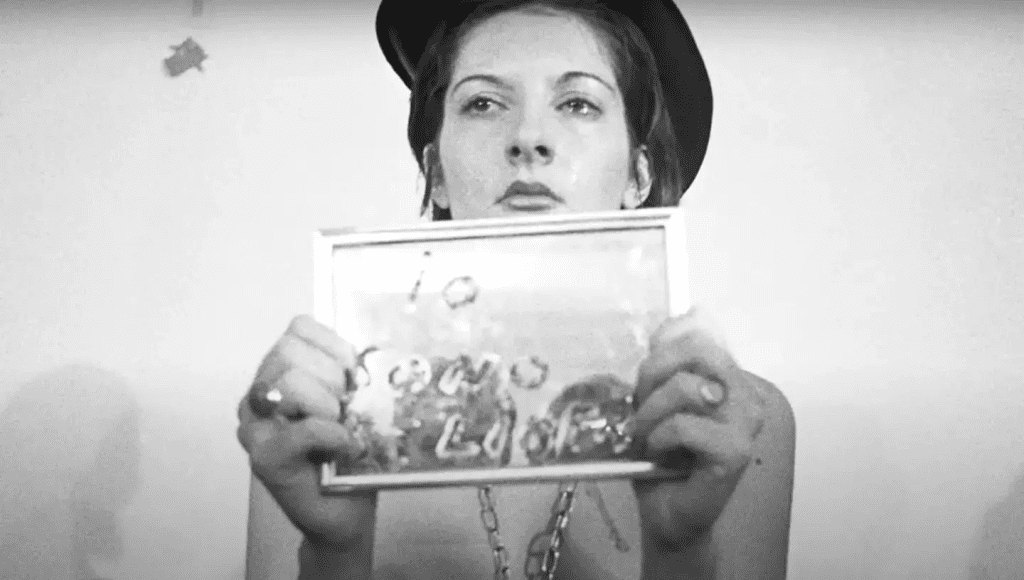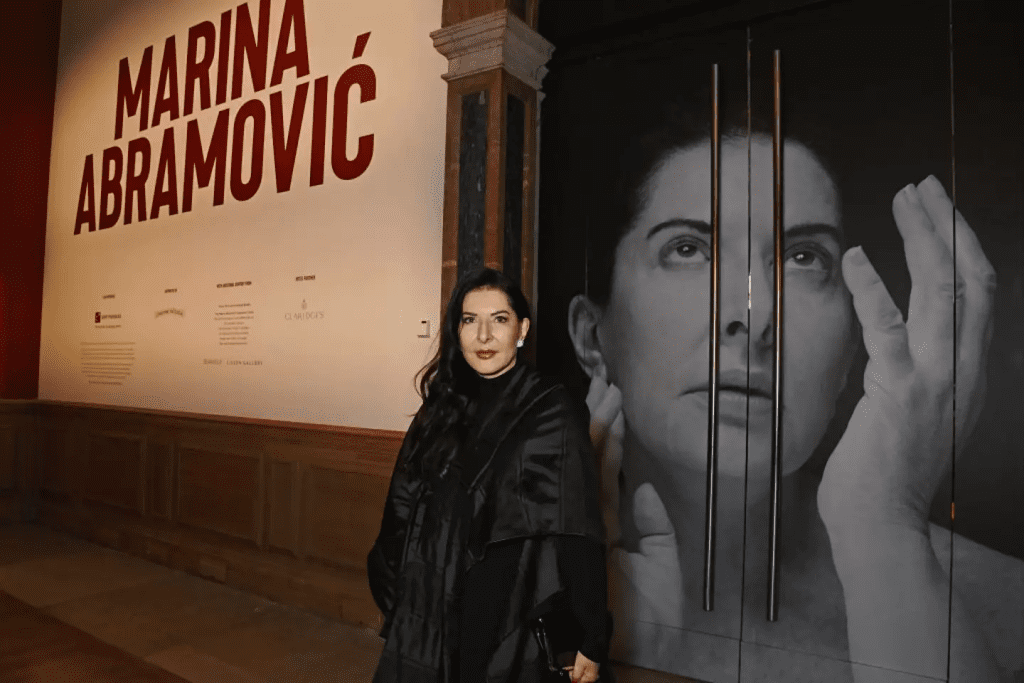
One of the most controversial and daring performances in the world of art was Marina Abramović’s 1974 installation “Rhythm 0.” In this shocking piece, the Serbian artist became the subject of the audience’s actions, allowing them to do anything they wished with her for six hours.
The premise of the installation was simple but terrifying: Abramović stood motionless, surrounded by a variety of objects, with the instruction for the spectators to use them “as desired.” At first, the audience engaged in relatively harmless acts, such as feeding her grapes or placing flowers in her hands. But as time passed, the mood darkened, and the use of more dangerous objects escalated.

By the end of the six-hour ordeal, Abramović had endured severe physical harm. Her clothes were cut off, her skin was slashed, and a loaded gun was placed to her head. At one point, a spectator even put his finger on the trigger, pushing the performance to the brink of tragedy. Abramović herself admitted later that she had been “ready to die” during the performance, and it was only due to luck that she survived.
Reflecting on the experience decades later, Abramović revealed that the performance had a lasting effect on her. “After the performance, I have one streak of white hair on my head,” she said. “I cannot get rid of the feeling of fear for a long time.” The intense fear she experienced during “Rhythm 0” became a permanent reminder of the risks she had taken. She also noted that the performance taught her valuable lessons about boundaries and self-preservation, acknowledging that she now knows where to draw the line in her art.

“Rhythm 0” was an exploration of human nature and the potential for violence when individuals are given complete freedom. Abramović’s willingness to remain still, enduring whatever the audience chose to do, was a profound and unsettling commentary on the dynamics between artist and spectator. At the time, performance art was not widely recognized, and she sought to demonstrate the vulnerability and powerlessness inherent in her role.
In later years, Abramović went on to create other impactful works, including her well-known “The Artist Is Present” installation at the Museum of Modern Art (MoMA) in New York. In this piece, she sat silently across from museum visitors, offering them a chance to engage in a “silent conversation.” This work, in contrast to the violent acts of “Rhythm 0,” focused on creating intimate, emotional connections, with many visitors moved to tears without a word being spoken.

Despite the immense physical and emotional toll of “Rhythm 0,” Abramović’s work remains a testament to her commitment to pushing the boundaries of art and exploring the depths of human experience. Her willingness to risk her life for her art has made her a groundbreaking figure in the world of performance art.


